Ryan Hall's Blog, page 142
August 8, 2017
Everything You Need To Know About Running In The Sand


There’s a reason when you’re running slowly you joke that it’s like running through sand. Because running through sand is always tough and always slow.
The beach may look soft and inviting, but don’t let that fool you. According to one study, running on sand requires 1.6 times more energy expenditure than running on a hard surface. Part of it is the extra mechanical work you have to do stabilizing yourself in the sand. But you’re also not getting as much forward momentum from your push-off, because your foot sinks and doesn’t propel you forward as easily.
“On the road you can run faster, but it’s harder on the legs,” says John Honerkamp, a coach, consultant for running companies and former professional runner.
Soft sand might be easier on your legs, he says, but you’ll run slower—and your body is under extra stress from the uneven surface. All those little muscles in your feet and calves work overtime on the beach.
How to Get Started
Mason actually advises people to simply walk on the beach their first day to get used to the sand. When you’re ready to run (a day or two later), start easy with just 20 minutes. If you do 10 minutes out and 10 minutes back, that also helps ensure you don’t end up running tilted in just one direction since beaches are often cambered with the water lower than the sand berm.
Adames actually cautions against running on the hard-packed sand next to the water. It might be easier to run on, but the sand right next to the water is often on a tilt or incline. And running in too much deep, soft sand too quickly puts more stress on your calves. It’s a balance.
Slowly work your way up with beach runs two times per week. If you’re going to be at the beach for a month or longer (lucky you!), then you could work up to an hour of running, says Honerkamp. But you have to be cautious because those same things that can be benefits—strength, speed training and developing muscle stability—can also turn to injuries if you ramp it up too quickly.
It’s all about adaptation and adjustment. In the sand, you’ll want a shorter stride, quicker turnover and more arm pumping to stay balanced, says Honerkamp. In order to still be getting a benefit and building ability, you shouldn’t be straining and should feel relaxed. Once you get to your goal workout, don’t keep increasing the length or effort.
“Train, don’t strain,” says Clarke.
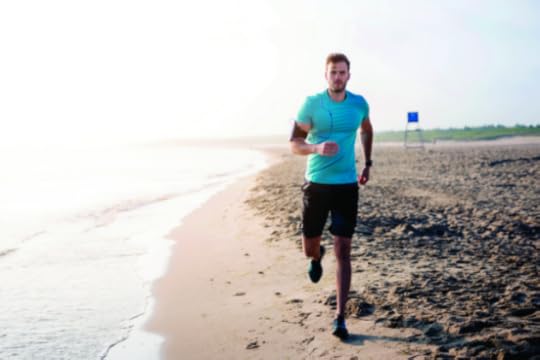
Shoes or Barefoot?
Honerkamp says, “Either is fine.” But Mason suggests going with what you’re used to.
If the sand is compact enough, you could find it more pleasant to run in shoes. But if the sand is deep or soft, then most people find it easier to run barefoot. However—and this is a big caveat—if you haven’t run barefoot before, then that’s another new stress you’re adding.
Don’t overdo it and hurt yourself. Build up with some shoe running and some barefoot, or transition from heavier to lighter or thinner shoes.
Adames does most of his beach running barefoot, since he’s used to it. One of the biggest risks he sees frequently is stepping on things in the sand, especially if the beach isn’t clean or if there are bees near the water line. “I’ve stepped on quite a few bees,” he says.
RELATED: 4 Reasons To Hit The Sand And Go For A Run On The Beach
Don’t Forget
Sunscreen, a hat and sunglasses
Morning and late evening mean fewer crowds
Sand can get burning hot in the afternoon sun
Remember landmarks and where you started—all those towels can look the same
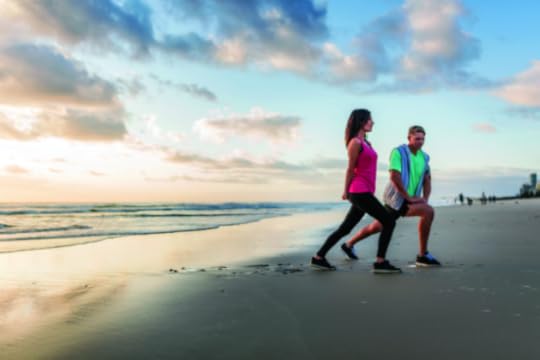
3 Beach Workouts
Sometimes, even on vacation, it helps to have a specific workout. Here are three ideas to make it fun.
HILL SPRINTS—Find a sand dune you can run up (note that some dunes are protected, so make sure you’re allowed on it). Start with four 10-second bursts, and gradually build up to 10 of them. These short bursts uphill can build power and strength, says Honerkamp.
STRIDES—Many runners will do light strides barefoot or on the grass for those same foot-muscle benefits. You can get that, plus the speed bonus, with 5–10 strides on the beach after your regular workout. Build your speed and intensity over 40–100 meters and then slowly decelerate. Give yourself time to recover before repeating (either by standing, walking or jogging).
EASE INTO IT—If you’re more prone to injury or running in sand is very new to you, the first day, take a walk. The second day, just run 10 minutes, or walk one way and jog back. Then a few days later, run 10 minutes out and 10 minutes back. Easy running will build up your calf muscles and endurance.
RELATED: Speed Workouts You Can Do Anywhere
The post Everything You Need To Know About Running In The Sand appeared first on Competitor.com.
There’s No Shame In Crossing The Finish Line Last
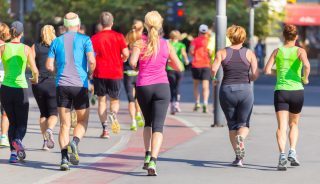
The last team to finish a 200-mile Ragnar Relay race. The last qualifier to make it to the Olympic Trials marathon. A cancer patient whose friend carries her oxygen tank and walks with her while she finishes her first 5K race at the very back of the pack. Three stories of runners at vastly different stages of life, all with one message: When it comes to running, it’s showing up and getting in the race that counts.
We make running an indispensable part of our lives, even though it’s only a tiny few of us who will ever know what it feels like to cross the finish line first. Yet it’s that fear of the polar opposite—being last—that can keep new runners out of the race entirely.
Beth Baker, founder of the Seattle-based training company Running Evolution, calls it our primal instinct for survival from the days when we were either predators or prey.
“When we were last, we were usually picked off by whatever predator was chasing us!” Baker explains. “Runners can get this weird primal sensation in their head that there’s something wrong and they’re in danger [being last]. In modern day society it becomes, ‘I’m a loser,’ ‘I’m not good enough.’ It’s a little confusing in the head.”
Baker knows firsthand what it feels like to be last. Her athletes fielded two 12-person relay teams for a recent Ragnar Relay that covered a 200-mile stretch of scenic Western Washington roads. From Blaine, on the Canadian border, to the southern tip of Whidbey Island in the Puget Sound, her athletes made their way through their first-ever relay event. As the finish line drew closer, though, reality set in: they were behind. Far behind.
“Sure enough, we got to the end, and nobody was there. The pizza was gone! The beer was barely there. But there were 24 of us, so we just had a party,” Baker remembers.
RELATED: 9 Essential Tips For New Runners
Baker’s training groups are built on camaraderie and friendship—no speed required. But what happens when you’re supposed to be one of the best, and you find yourself last? That’s where Pennsylvania-based marathoner Jed Christiansen found himself at the 2016 U.S. Olympic Trials Marathon in Los Angeles. The qualifying standard was 2:19. Christiansen made the cut by exactly four seconds. Of the 211 American men who qualified for the Trials, Christiansen was, you guessed it, dead last. Then came Trials day: hot weather and a mess of injuries that could have easily sent him to the sidelines.
Instead, Christiansen chose the path of participation: Show up, give your best, and forget about the rest.
“A lot of people have [a hard time] being able to compete on a certain day, and I just needed to run within myself,” Christiansen says. “It’s 26 miles and [I had to] just measure out my energy and do the best that I can. I was last in the [Trials] race for most of it, but I was just hanging on, and eventually people started coming back to me, because it was really hot and they weren’t really listening to their bodies for that day.”
He wound up placing 44th out of 105 finishers (169 men started the race). Not bad for the last guy standing.
“I think it starts with just every day giving the best you have. When you are trying to do something really well, ultimately you can’t control everything. You can’t control the other people, you can’t control the weather, so the number one thing you can do is control your attitude and your effort and give it the best that you have,” says Christiansen.
A few years back, Linda Keeney, a triathlete based in Shoreline, Wash., heard that a friend wanted to walk a local 5K. The friend was managing a cancer diagnosis, so Keeney figured they’d be slow. What she didn’t bank on was her friend bringing her oxygen tank with her to the race. “Do you think we can make it to the finish line?” her friend asked.
“I will get you there,” Keeney promised. Her friend finished that 5K far back in the pack, and went on to participate in the American Cancer Society’s Relay for Life before succumbing to the disease.
“I believe in the empowerment of the finish line,” Keeney says.
So does Baker. It’s the advice she gives every athlete who’s afraid of stepping up to run a race for fear of what could happen.
“I have heard of people doing a DNF instead of coming in last, choosing not to finish,” Baker says. “My number one goal for myself is to cross that finish line. You know? If all hell breaks loose, getting past that finish line is goal number one.”
And that’s what keeps all of us going, whether we finish first, last, or somewhere in between.
RELATED: If You Run Slow, Who Cares?
The post There’s No Shame In Crossing The Finish Line Last appeared first on Competitor.com.
4 Reasons To Hit The Sand And Go For A Run On The Beach
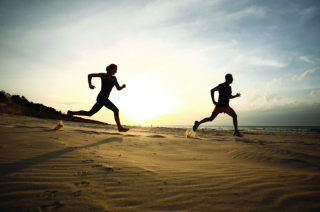
There’s no reason why you should pass up the sand this vacation and hit up the treadmill instead. And skipping your miles simply isn’t an option. “Don’t sideline yourself for your whole vacation,” says Honerkamp. Here’s why you should hit the sand…
It’s great for intensity training.
Ryan Adames is a lifeguard in Santa Cruz, Calif., and a physical therapist’s aide. He runs on the beach multiple times each week. He’ll do some easy running and core work too, but he likes to do short sand sprints for high-intensity interval training (HIIT). The simple act of running through the sand “ups the intensity a lot more,” he says, and lends itself to working on explosiveness.
Brian Clarke, a runner and coach in Hawaii, compares sand running to hill running, where the purpose is often to build power. “Think of it as the deeper the sand, the steeper the hill,” he says. Soft or deep sand means there’s more resistance, which means you’ll need more power to get through it.
It’s good for your foot muscles.
There are reasons most runners also cross-train: to build up their non-running muscles and prevent injury. Running on the beach isn’t exactly cross-training, but it sort of counts. “You’re using your body differently, which is good,” says Honerkamp. Your core has to stabilize itself on the soft, uneven surface. And more importantly, your feet and lower legs have to stabilize themselves.
“It’s doing work,” says Adames of your foot. “It’s trying to make sense of the soft ground beneath you.” There’s some bene- fi t to your body learning and practicing that—as long as you don’t overdo it (which we’ll get into soon).
RELATED: How Runners Can Improve Foot Strength
It beats no running.
When Honerkamp coached thousands of runners through the New York Road Runners program, he’d regularly have participants tell him they were going on vacation or to a resort and wouldn’t be able to run. That’s not going to cut it with this coach.
“I’d rather you run 20 minutes on the beach than no minutes,” he’d say, though he advises not to do your long run on the beach and to build up slowly. Like any new form of running or training, easing into it is best. Maybe you just do strides or 10 minutes on the beach. It still adds something to your training.
Because it is fun!
“It’s hard to have a bad day running on the beach,” says Dr. Amadeus Mason, a professor of orthopedics at Emory and a team doctor for USA Track & Field. Part of the reason you run is to experience new things and enjoy yourself.
Just don’t enjoy yourself so much you end up getting injured and being miserable the rest of your vacation. It’s better to underdo it than overdo it and cause a c alf or foot strain. This is especially true if you’re not even used to running on trails regularly or if you’re prone to injuries.
RELATED: Everything You Need To Know About Running In The Sand
The post 4 Reasons To Hit The Sand And Go For A Run On The Beach appeared first on Competitor.com.
Kipyegon Prevails Over Simpson In Close Women’s 1500m

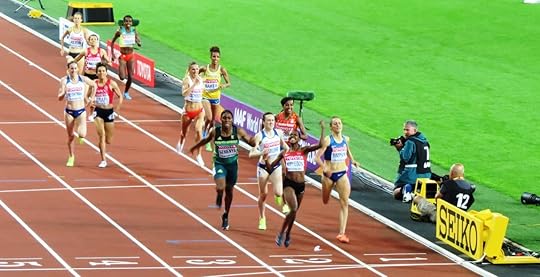
Faith Kipyegon of Kenya wins the 2017 IAAF World Championships 1500m title. Photo: Jane Monti, Race Results Weekly
Kenya’s Faith Kipyegon backed up her Olympic 1500m title from Rio de Janiero last year by grabbing the gold medal again at the IAAF World Championships in London. In a wild finish, where five women were still in contention for the medals with 50 meters to go, Kipyegon had both the best position and top speed, stopping the clock in 4:02.59 on the strength of a 58.1-second final lap.
“I knew it would be fast, it is such a quality field,” Kipyegon told IAAF interviewers. “The best was going to win here. It was always going to be quick and competitive.”
The race was made, however, by Britain’s Laura Muir and the Netherlands’ Sifan Hassan. Muir, the British record holder, took the lead from the gun, and appeared to be nearly sprinting down the backstretch. American Jenny Simpson, last year’s Olympic bronze medalist, followed Muir immediately as did Kipyegon and Sweden’s Meraf Bahta. Hassan was at the back of the 12-women field waiting for the race to sort itself out.
“What I like to do is run as hard as I can and that’s what I did today,” Muir said in her post-race interview.
But the Scotswoman tempered her speed into the homestretch, resulting in a not-too-fast 65.4-second first 400 meters. Kipyegon was right in her draft with Poland’s Angelika Cichocka and Simpson just slightly behind. Muir stayed in the lead through 800 meters, but the pace slowed dramatically to just 71.8 seconds prompting Hassan to surge past the entire field on the backstretch and take the lead.
Kipyegon knew she couldn’t let Hassan go, and chased the Dutchwoman. The pair seemed to already be running close to flat out, despite the fact that there was still about 500 meters left in the race. Hassan ran the third 400 meters in a blistering 61.2 seconds with Kipyegon just a fraction of a second behind. Running down the backstretch behind the leaders, Simpson sensed an opportunity: the leaders’ pace was unsustainable.
“I remember coming around the bend and just thinking, I can see how hard Faith and Hassan are racing each other, and I really believe I can get one of them if they’re working this hard, this far out,” Simpson told reporters.
RELATED: Simpson Prepared For Controversy Of The IAAF World Championships
Hassan and Kipyegon bolted into the homestretch going full throttle with Muir and South Africa’s Caster Semenya in hot pursuit. It looked as if they would get the gold and the silver, when Hassan started to tie up. Meanwhile, Simpson found a clear line on the inside and was quickly gaining ground.
“The final stretch, I just thought, I can win,” Simpson said. “I can win, and I thought no one’s going to believe that I’m doing this again. It just felt so amazing, and it’s kind of the surprisingly lucid last 100 meters for me.”
 Jenny Simpson shows off the American flag after winning a silver medal in the 1500m. Photo: Jane Monti, Race Results Weekly
Jenny Simpson shows off the American flag after winning a silver medal in the 1500m. Photo: Jane Monti, Race Results Weekly
She didn’t win, but Simpson managed to slice through for second place in 4:02.76, closing in 58.8 seconds, and taking her fourth medal at a global championships since 2011. Semenya managed to beat the fading Muir for the bronze inside of the final five meters, 4:02.90 to 4:02.97. An exhausted Hassan finished fifth in 4:03.34.
“1500m is a tactical race, I tried to find my own space but fortunately I managed to get away with the bronze so I am happy,” Semenya told IAAF interviewers. She now has two days to rest before the heats of the 800 meters where she is the defending champion.
Muir, who received a thunderous reception from the crowd prior to the race, said she had run her heart out.
“You know it’s fourth, what can I say,” Muir told IAAF interviewers. “I gave it everything I had but ran out of energy in the last 50 meters as they came past. Considering the disruption I had this year, I did all I could.”
World record holder Genzebe Dibaba of Ethiopia finished last in 4:06.72. She had been in fifth place at the 1200-meter mark, but faded badly in the final 300 meters.
(c) 2017 Race Results Weekly, all rights reserved
RELATED: Weekend Highlights From IAAF World Championships
The post Kipyegon Prevails Over Simpson In Close Women’s 1500m appeared first on Competitor.com.
August 7, 2017
Chad Johnson’s Daughter Cha’iel Wins Third Junior Olympics Gold

Last week, Cha’iel Johnson, 12, daughter of Chad Johnson (the former NFL receiver known as Ochocinco), won her third consecutive gold medal at the AAU Junior Olympic Track & Field Championships, winning the 800-meter by two seconds. In 2015 she won the 400-meter and in 2016 she won the 800-meter race.
She is the nation’s top-ranked 800-meter runner in her age group and her gold-medal performance was run in 2:13.72. Her previous time was 2:16.35.
Cory Mull of Milesplit.com reported that Johnson “was just 0.43 seconds away from setting a new AAU national record in the race.”
“I have a lot of heart,” Johnson told Mull in an interview. “I do my races with my heart. I just know I can win it and stuff like that. I do it for my parents, my coaches, my sisters and my brothers and my whole team.”
You can watch the full interview with Milesplit.com here.
The post Chad Johnson’s Daughter Cha’iel Wins Third Junior Olympics Gold appeared first on Competitor.com.
Weekend Highlights From IAAF World Championships
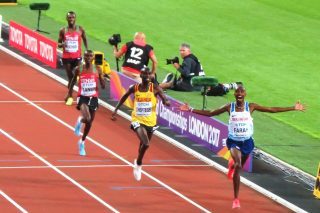
Photo: David Monti, Race Results Weekly
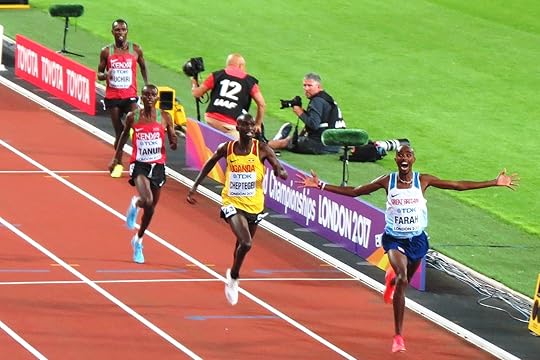
Photo: David Monti, Race Results Weekly
There were many surprising performances and victories at the IAAF World Championships this past weekend. Here is what you may have missed during the first three days of the meet, as well as some races to watch for this week.
Bolt loses his first championship race
In the final 100-meter race of his career, Usain Bolt shocked the crowd not by winning yet again, but by finally losing. USA’s Justin Gatlin won the race in 9.92, followed by fellow American Christian Coleman in 9.94. Bolt had to settle for the bronze medal.
Gatlin is a polarizing figure in track and field, due to his previous doping ban. However, in his post-race interview, he praised Bolt, telling Let’s Run that “He’s inspired me to be a better, faster competitor, and I’ve only wished every year that I could be his top rival.”
Meanwhile Bolt is not altering his plans to retire due to his loss.
“I was always going to end no matter what happened—win, lose or draw,” Bolt said to the New York Times. “I was always going to walk away. I’ve done all I can do for the sport and for myself. It’s time to go.”
RELATED: Puma Created Brand New Spikes For Usain Bolt’s Last Race Ever
Farah once again wins 10,000-meter world title
In an exciting and fast-paced race, Mo Farah proved that despite his age, he still has what it takes to walk away with a gold medal. Farah ran a 26:49.51 to win his third straight 10,000-meter title in front of fans in his hometown of London.
“I can’t lose in my hometown,” Farah said, as reported by Race Results Weekly. “I can’t, I can’t. There’s no place like London. I love the people.”
Farah took the lead with four laps to go in the race. With only 300 meters left, he got tangled with Kenya’s Paul Tanui, but managed to avoid a fall and launch into his kick. His last lap was a speedy 55.7 seconds. Uganda’s Joshua Cheptegei was second in 26:49.94 and Tanui finished third in 26:50.60. In total, seven men broke 27 minutes. Farah will next race in the heats of the 5000 meters on Wednesday.
Cragg takes bronze in marathon with a sprint to the finish
With her third place finish in the marathon on Sunday afternoon, Amy Cragg became the first American woman to medal in the event in 34 years. After the 35 kilometer mark, Cragg, Bahrain’s Rose Chelimo, and Kenya’s Edna Kiplagat and Flomena Cheyech broke away from the pack of 14 runners. Chelimo and Kiplagat fought for the lead, with Chelimo eventually winning in 2:27:11. Kiplagat earned silver. Behind them, Cragg and Cheyech fought for third place, exchanging leads until Cragg passed with 400 meters to go to win the bronze.
“I am so thrilled with this,” Cragg told reporters. “It was really painful, but worth every little bit of pain.”
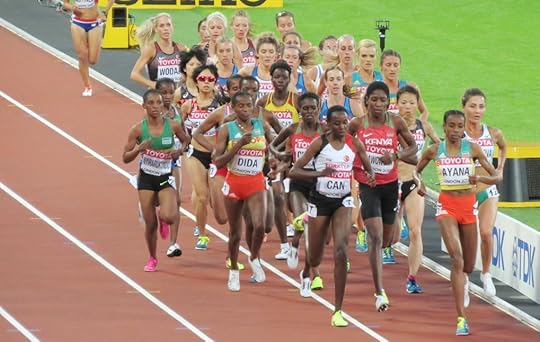
An unbelievable victory in the women’s 10,000m
Ethiopia’s Almaz Ayana turned both an unbelievable and questionable performance to win the women’s 10,000 meters on Sunday night. Her winning time of 30:16.32 was 46 seconds faster than the second place finisher. Ayana’s last 5,000 meters was run in 14:24.96, which is faster than her 5000m championships record of 14:26.83. She lapped almost everyone in the field of world class runners in route to her victory.
Emily Infeld was the top U.S. finisher, with a personal best of 32:20.45. Fellow American Molly Huddle, who finished in 8th, was asked by Let’s Run if she felt suspicious about Ayana’s race.
“I feel like they get away with a lot to be honest,” says Huddle. “Everyone talks about Russia and Kenya and they’ve kind of cracked down on them. So maybe [Ethiopia] will be the next country to get a bit more stricter regulations and testing. Unfortunately nowadays you always have to question a world record.”
Bowie’s finish line lean earns her a gold
Another American pulled off a big upset in the sprints as well. With a dramatic dip at the finish to earn the gold, Tori Bowie stole a victory away from Marie-Josée Ta Lou of the Ivory Coast. Ta Lou initially assumed she won until the results were finalized after a few confusing moments. Jamaica’s Elaine Thompson, who was the pre-race favorite, faded to 5th place. Bowie will now try to win the 200 meters later on in the meet, with heats beginning on Tuesday.
“I have a few cuts,” she said to the NY Times, “but I’ll be ready for the 200 meters.”
This is the first time since 2005 that an American man and woman both hold the title for the 100 meters.
Events to watch this week
Monday, Aug. 7: Women’s 1500 meter final
One of the most competitive finals in World Championship history, this should be one of the best races of the entire meet. American Jenny Simpson will be in the hunt for a medal.
Tuesday, Aug. 8: Men’s 3000 meter steeplechase
Evan Jager tries to become the first American to win gold in the men’s steeplechase.
Wednesday, Aug. 9: Women’s 400 meters
Thursday, Aug. 10: Men’s 200 meters
Friday, Aug. 11: Women’s 3000 meter steeplechase, Women’s 200 meters
Saturday Aug. 12: Men’s 5000 meters, Men’s and Women’s 4×100 meter relay
Sunday Aug. 13: Packed day! Women’s 5000 meters, Women’s 800 meters, Men’s 1500 meters and Men’s and Women’s 4×400 meter relay.
RELATED: How To Watch The IAAF World Championships—And Why You Should
The post Weekend Highlights From IAAF World Championships appeared first on Competitor.com.
4 Tools That Are An Injured Runner’s Best Friends
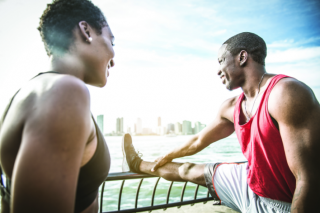
Physical therapist Michael Conlon, owner of Finish Line Physical Therapy in New York City, recommends these tools to lend a keep-yourself-fit hand.
RELATED: Here’s How You Can Stay Fit When You Are Injured
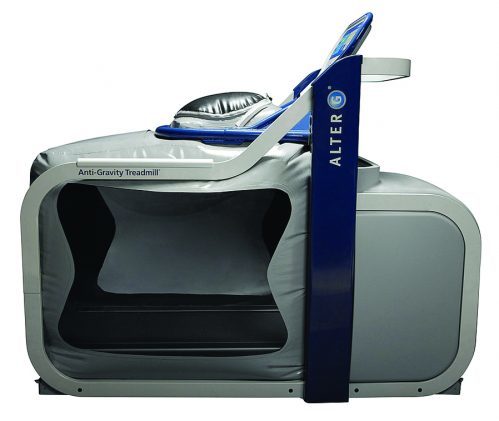
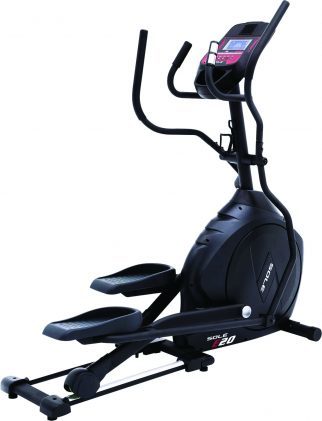
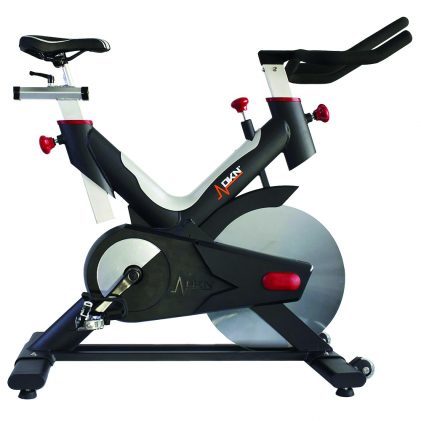
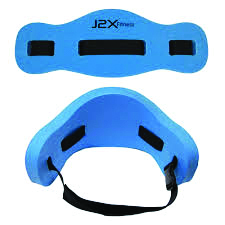
The post 4 Tools That Are An Injured Runner’s Best Friends appeared first on Competitor.com.
Why Your Smartphone Can Shut Down On Your Run

Bringing your smartphone on a run has become just as essential as strapping on your water bottle. And like your water bottle, if you don’t control your phone use, it could wind up depleted when you need it the most.
Wathana Prak, owner of irepairMD in Richmond, Va., shares his knowledge on why phones tend to run out of juice during your run and what you should do.
Feeling hot, hot, hot
Your phone can overheat, but not necessarily because it’s in direct sunlight. (Although that is bad for your phone too.)
If you have apps, wi-fi and the cell signal activated, these can all cause the phone’s data processor to work hard. If you are also listening to music and using a GPS system, your phone is under even more stress, Prak says. Not to mention that most people keep their phones in a sealed case.
“You have all these things working together in one small place with no ventilation—eventually it gets overheated,” Prak says.
As a result, the battery gets drained.
Understand proper phone care
Prak says if you are taking your phone on a run, close the apps that you are not using. Also shut off your wi-fi so the phone isn’t wasting battery power searching for a signal.
If you ditch your phone in your car while you run, you also need to be careful. Apple says iPhones can endure temperatures between -4 degrees and 113 degrees Fahrenheit. However, a temperature of about 95 degrees can damage the battery. The interior of your car is likely going to be way hotter than that, unless you shield it. Prak also notes that extreme heat can expand the phone’s battery, which can then push out the touch screen.
Many smartphones have temperature alerts and the ability to shut down if they get too hot, Prak says. But you may still be able to use it for an emergency call, according to Apple.
If your phone is too hot to touch, turn it off and move it to a cooler environment, experts say.
Sweat can also get into a phone’s charging port, Prak says. The salt in sweat can damage it, so runners should protect the port with a plug.
RELATED: 6 Places You Should Never Carry Your Phone While Running
The post Why Your Smartphone Can Shut Down On Your Run appeared first on Competitor.com.
August 6, 2017
Why You Are Never Too Old To Run
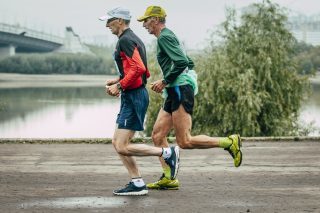
I started running six years ago at the age of 41 years old. Since then, I have completed seven marathons, two Ironman triathlons and at least 15 half marathons. This is not a brag. I want to merely emphasize the fact that one is never too old to get started.
Yet, getting started is just part of the equation. Once we are runners, how likely is it that we will be able to continue running as we get older? I was talking to a friend the other day about how our parents are aging. She said, “Well, and it’s not like they’re going to be running around the track when they’re 80!” My first thought was, “Why not? I want to be doing that when I’m 80.”
This does bring up an interesting point. What exactly happens to our bodies as we get older? And is the aging process conducive to continuing to run? Is running harmful to us as we age?
Most research will tell you that you are never too old to run. This is fantastic news! However, we can anticipate changes to our bodies that might decrease performance. The need for recovery and rest days will certainly become a priority. Below are some adjustments (a nice way of saying “deteriorations”) your body endures as you move beyond 30 years of age:
Aerobic capacity decreases (an inevitable decline in maximum heart rate)
Muscle mass reduces
Muscle elasticity decreases
Bone density reduces
Metabolism slows
Body fat increases
Immune system becomes weaker
After age 35, endurance performance declines by about five to 15 percent per decade.
While this all sounds very doom and gloom, there is an upside. Running has been shown to have many benefits for us as we age, ranging from the physical to the mental. Such advantages include decreased risk of heart disease, diabetes and high blood pressure, reduced depression/anxiety, weight management/control, improved mobility and improved bones, muscles and joints.
Reading the above, you would be crazy not to start or to continue to run as you get older. But, you must be smart about it.
Warm up before each running session for at least a mile. Add in some dynamic exercises to prepare your body to run.
Take at least two rest days from running per week, if not more.
Incorporate non-impact cross training, such as swimming, water running or cycling.
Increase weight/strength training to maintain muscle mass.
For some, race times will continue to plummet as they age. However this does not have to be the case. Smart training choices can lead to amazing results even as you get older. So run on, my old friends!
RELATED: Age Up! How Runners Can Train To Own Their Age Group
The post Why You Are Never Too Old To Run appeared first on Competitor.com.
August 4, 2017
What Colleen Quigley Can’t Run Without

It’s Day 1 of the IAAF World Championships! It’s also Day 1 of a new Competitor Running weekly feature where we talk to some of the world’s elite runners and they give us some things they can’t run without.
First up this week is Colleen Quigley, who ran in the Rio Olympics in the 3000-meter steeplechase. She took some time to share with us what she can’t run without while she’s in London!
The USA jersey (pictured above) with my last name pinned to it. When I put on this singlet it reminds me that I am representing not only my family and my team [Nike’s Bowerman Track Club] but also my country. There are so many people watching Team USA and cheering us on. I feel so proud to wear the jersey and compete against the best track athletes in the world.
My favorite Nike spikes that make me feel fast and strong! When I put on my racing shoes I want to feel confident, comfortable, and powerful.
The right warmup tunes. I usually listen to music on the drive to the track for a workout or race to get myself in the right mood. Some of the tunes make me wanna dance, some have uplifting lyrics like Sia’s “Unstoppable,” and some just make me feel like a badass. Listen on Spotify here.
Hair and makeup. This might sound crazy to some as I’m already sweating before I even show up to the start line for my race. However, I believe that if you look good, you feel good and you will perform well! I want to show up to the race feeling confident and this is part of that.
The support of my family, friends, and BTC team! These people encourage me, support me in my goals and remind me that I’m loved whether I win any medals.
HOTSHOT. This little bottle is luckily super travel friendly so I can easily take it wherever I train and race. I rely on it extra in the summer heat when my body feels drained from the sun. It’s the extra boost I need to rejuvenate and combat muscle cramps.
The post What Colleen Quigley Can’t Run Without appeared first on Competitor.com.
Ryan Hall's Blog
- Ryan Hall's profile
- 21 followers



